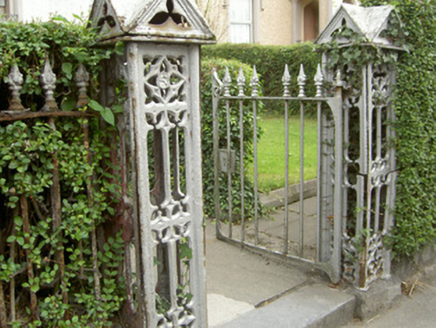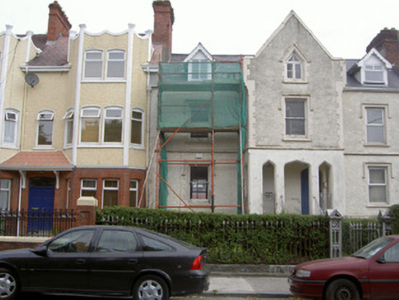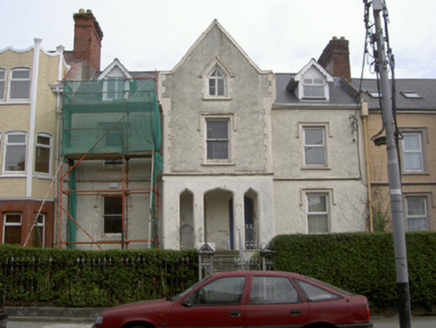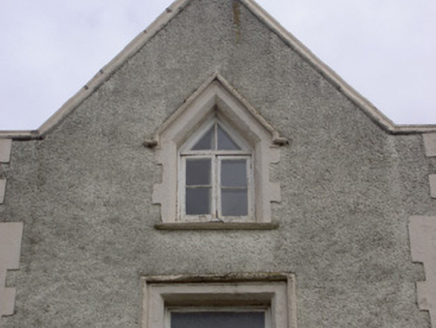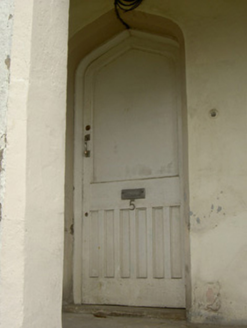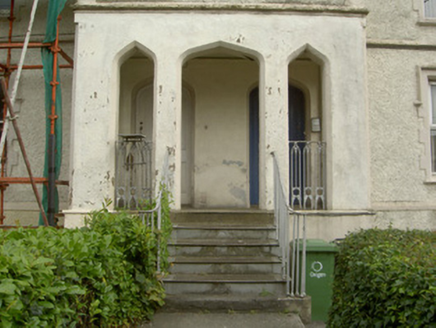Survey Data
Reg No
13707005
Rating
Regional
Categories of Special Interest
Architectural, Artistic, Historical
Original Use
House
In Use As
House
Date
1830 - 1835
Coordinates
304542, 306669
Date Recorded
04/08/2005
Date Updated
--/--/--
Description
Terraced one-and-a-half-bay two-storey over basement with attic house, dated 1834. Full-height gabled projecting bay shared with house to east. Pitched slate roofs, clay ridge tiles, red brick corbelled chimneystack, rendered fractable with roll-top limestone coping to south gable, lead flashing to valleys, dormer window with carved timber bargeboards, timber cladding and painted timber casement windows. Painted roughcast rendered walling, moulded string courses, painted stone coping to basement, rendered quoins to gabled-bay topped by moulded kneeler. Square-headed window openings, splayed smooth render surrounds, block-and-start jambs, hood mouldings, painted splayed sills, painted timber one-over-one sliding sash windows; pointed arch window opening to attic, painted timber casement window. Smooth rendered engaged porch to gabled-bay, stop-chamfered corners, Tudor arch entrance with chamfered reveals flanked by pointed openings with cast-iron guard rails, limestone slabs to platform, approached by cast-iron steps, wrought-iron hand railing; Tudor arch door opening to interior, chamfered reveals, painted timber panelled door; square-headed door opening to basement to west accessed by flight of steps, painted timber and glazed door. Set within shared garden to south, concrete path, bounded by dressed ashlar stone plinth with cast-iron railings, piers and gates, tooled limestone threshold to gateway.
Appraisal
Built in 1834, by Thomas Smith, also architect of Louth Hospital, this terraced house, built as a pair with the house to its east, displays an interesting symmetrical design, which is highlighted by the gabled-bay. The use of simple decoration is effective, leading to an uncluttered façade, yet relieving the otherwise austere facade. The shared porch with its Tudor-influenced openings is particularly noteworthy, while the intricate ironmongery adds artistic significance.
